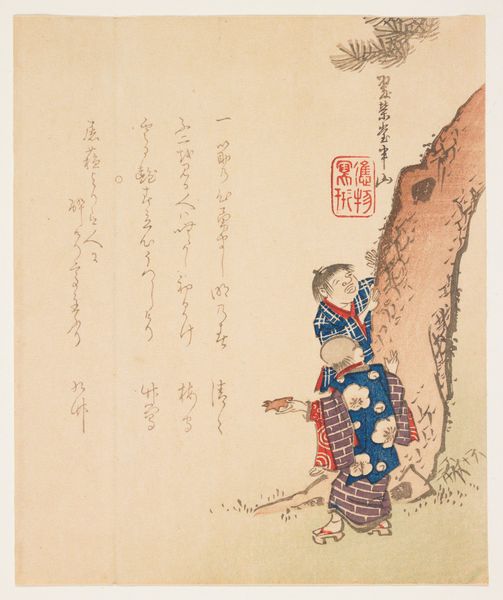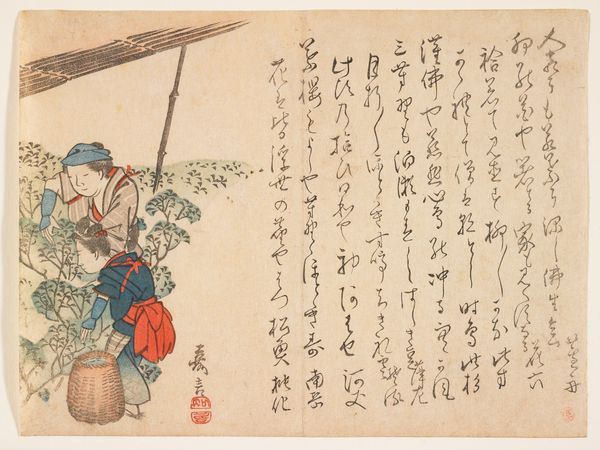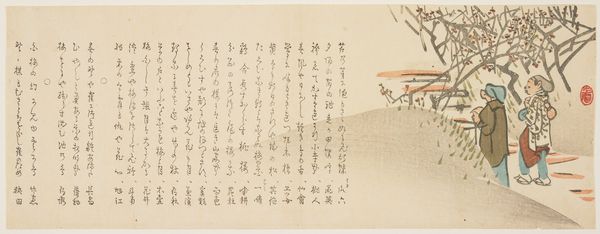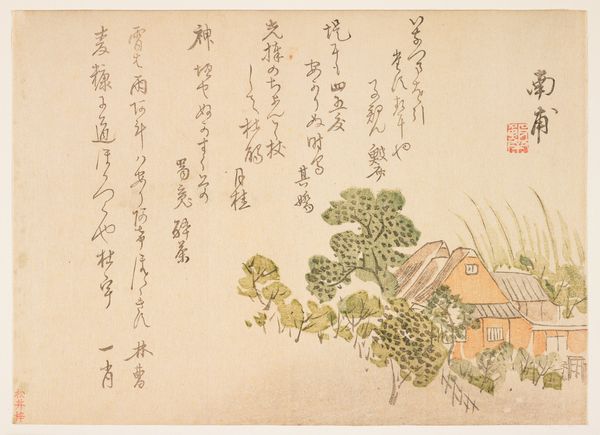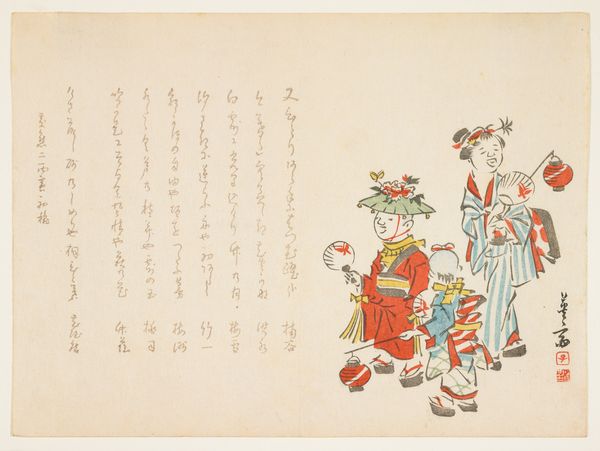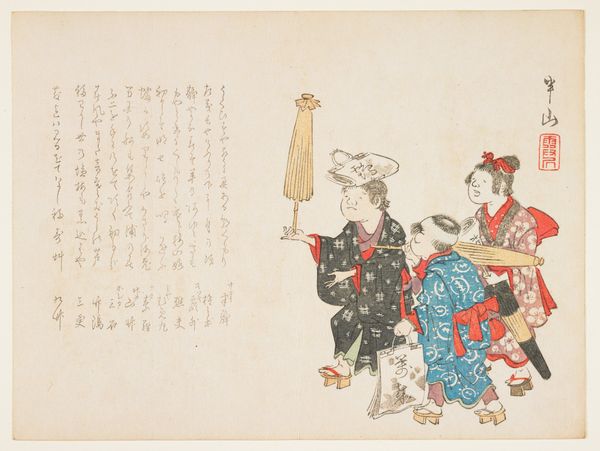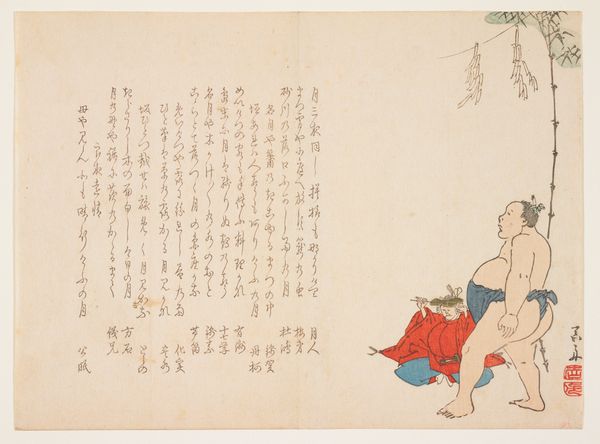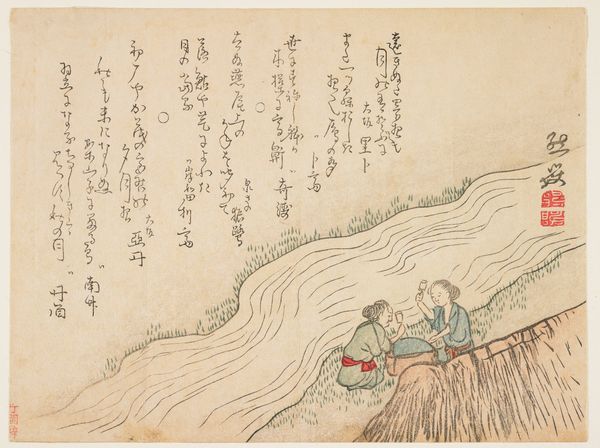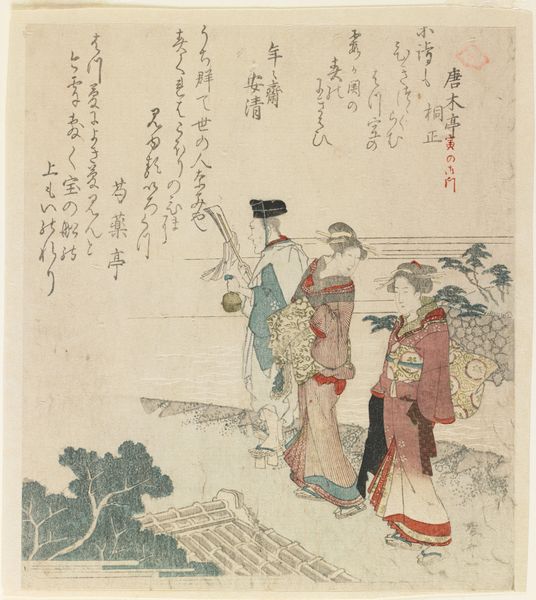
Visiting a Shrine of the Eagle God Possibly 1861
0:00
0:00
print, ink
# print
#
asian-art
#
landscape
#
ukiyo-e
#
ink
#
genre-painting
Dimensions: 7 1/4 x 9 13/16 in. (18.4 x 24.9 cm) (image, sheet)
Copyright: Public Domain
Curator: There's a quiet serenity about this print, wouldn't you agree? Editor: Absolutely. It feels sparse, almost ghostly, like a memory fading at the edges. Curator: This piece is titled "Visiting a Shrine of the Eagle God", and is believed to have been created around 1861 by Hanzan Matsukawa. You're seeing an ink and color print in the Ukiyo-e style. Editor: Ukiyo-e, or "pictures of the floating world," captures daily life and landscapes so well, which makes it so indicative of culture and how everyday life becomes entwined with faith. I do wonder about that procession—what narratives and societal frameworks might it hint at? Curator: That’s a fascinating point. The image shows figures approaching a shrine. Notice the tall banner. These visits held significant weight—spiritual, communal, maybe even political implications, reflecting how the Shinto religion touched every part of the population in Japanese life during that era. Editor: Look at the weight of that script too, running down the whole of the left. It reminds me that this print wasn't just for aesthetic consumption; it was laden with symbolic, cultural weight. The artist's purpose extended beyond just recording a pretty scene. It almost operates as a commentary, doesn’t it? Curator: Indeed, these kinds of images gave commoners a way to have conversations about class structure in Japan and how different members of society can experience art differently. Also the symbol of the Eagle God likely relates to protection, victory and strength and its visitation is connected to prayers or appeals, something highly resonant in such sociopolitical context. Editor: To me the figures here embody resilience and deep traditions. As they gather and observe the rites of their culture, what were they hoping to change? Perhaps what stays with me is this piece of art’s capacity to capture the past whilst echoing our contemporary realities. Curator: A visit to a sacred place is powerful, that cultural thread—it continues through to modern art!
Comments
No comments
Be the first to comment and join the conversation on the ultimate creative platform.

